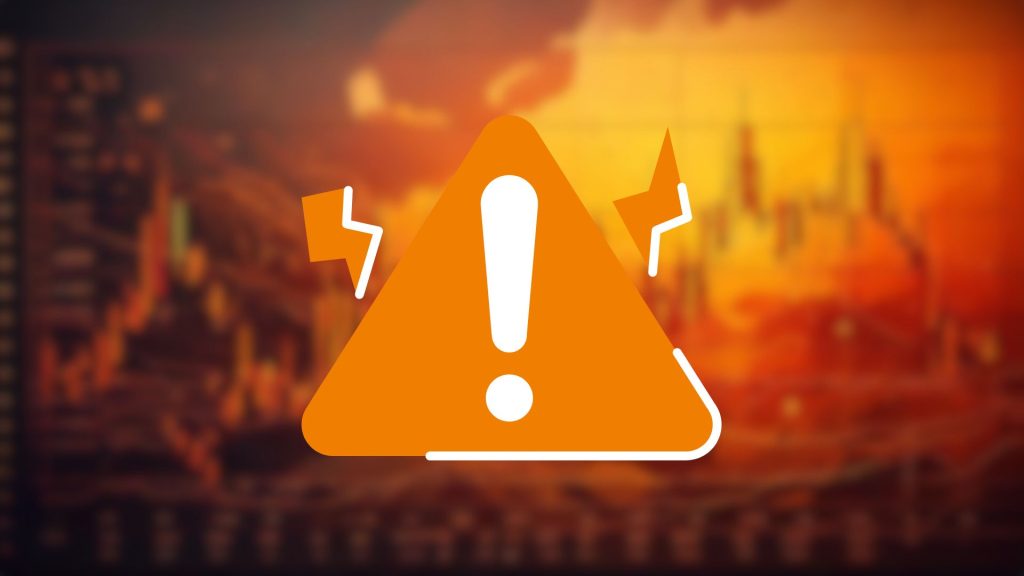Prop trading challenges have become an increasingly popular gateway for aspiring traders to access funded trading accounts and launch their professional careers. The allure of trading with a firm’s capital, coupled with the potential for significant profit splits, draws in countless individuals hoping to prove their skills and elevate their trading game.
However, the reality is that a significant majority of traders who attempt these challenges fail. While the dream of becoming a funded trader is enticing, the path is fraught with common pitfalls that can derail even seasoned traders. Understanding these deadly mistakes and, more importantly, learning how to avoid them is crucial for anyone serious about conquering prop trading challenges and achieving long-term success.
This article will delve into seven critical mistakes that consistently lead to failure in prop trading challenges. By identifying these common errors and providing actionable strategies to circumvent them, we aim to equip you with the knowledge and mindset necessary to significantly increase your chances of passing your next challenge and stepping onto the path of becoming a consistently profitable funded trader.
Mistake #1: Entering the Challenge Unprepared – Lack of a Solid Trading Plan
One of the most fundamental and yet surprisingly common errors traders make is entering a prop trading challenge without a well-defined, robust trading plan. Just as you wouldn’t embark on a complex journey without a map, you shouldn’t approach a trading challenge without a clear roadmap for success. Many traders jump into challenges based on impulse or overconfidence in their existing, often unproven, strategies. This lack of preparation is akin to walking into a high-stakes exam without studying – the outcome is almost preordained.
A comprehensive trading plan is the bedrock of successful trading, and it is even more critical when facing the structured environment of a prop trading challenge. Your plan should encompass several key components:
- Defined Trading Strategy: This is the core of your plan. You need a specific and backtested strategy that outlines exactly how you will identify trading opportunities, enter positions, manage them, and exit for profit or loss. Vague ideas or gut feelings are simply not enough. Your strategy should be clearly defined, with specific criteria for entries and exits based on technical analysis, fundamental analysis, price action, or a combination thereof. It should be a strategy you have consistently practiced and proven to be profitable in demo or paper trading.
- Risk Management Rules: Risk management is paramount, especially in challenges with strict drawdown limits. Your plan must detail your risk tolerance, position sizing methodology, maximum risk per trade, and daily and overall drawdown limits you will adhere to. These rules are not just guidelines; they are your protective shield against catastrophic losses and challenge failure. You should know precisely how you will determine your position size based on your account balance and risk per trade.
- Market and Instrument Selection: Your trading plan should specify the markets and instruments you will focus on trading. Don’t try to trade everything. Concentrate on markets you understand, have experience with, and where your strategy has historically performed well. Spreading yourself too thin across multiple markets can dilute your focus and increase the likelihood of mistakes.
- Trading Session and Schedule: Prop trading challenges demand discipline, and this extends to your trading schedule. Your plan should outline the specific times of day you will actively trade, aligning with your strategy and market conditions. Trading haphazardly or at times when you are not focused or market volatility is unfavorable is a recipe for disaster.
- Performance Tracking and Review: A crucial element of your plan is a system for tracking and reviewing your trades. You need to diligently record each trade, including entry and exit points, reasons for entry, and the outcome. Regularly reviewing your performance allows you to identify strengths and weaknesses in your strategy and make necessary adjustments.
How to Avoid This Mistake:
- Develop and Backtest a Trading Strategy: Before even considering a challenge, invest time in developing a concrete trading strategy. Backtest it thoroughly on historical data to assess its profitability and risk characteristics.
- Create a Detailed Trading Plan: Document your trading plan meticulously. Write down every rule, guideline, and parameter. Treat it as your trading bible and adhere to it strictly.
- Practice and Demo Trade Your Plan: Trade your plan extensively in a demo account to gain confidence and iron out any kinks. Ensure your plan is not only profitable on paper but also practically executable in real-time trading conditions.
- Review and Refine Your Plan: Continuously review and refine your trading plan based on your demo trading performance and market changes. A trading plan is not static; it should evolve as you gain experience and the market adapts.
Mistake #2: Disastrous Risk Management – Ignoring Drawdown Limits and Over-Leveraging
Prop trading challenges invariably come with strict risk parameters, most notably drawdown limits. These limits are designed to protect the firm’s capital and assess a trader’s risk management capabilities. Ignoring these limits or employing poor risk management practices is a surefire way to fail a challenge quickly. Over-leveraging positions and disregarding stop-loss orders are cardinal sins in the world of prop trading.
Many traders, eager to reach profit targets, fall into the trap of over-leveraging. They believe that taking larger position sizes will expedite the process and generate profits faster. However, leverage is a double-edged sword. While it magnifies potential profits, it equally amplifies losses. A few losing trades with excessive leverage can quickly decimate your account and trigger drawdown limits, ending your challenge prematurely.
Similarly, neglecting to use stop-loss orders or placing them too far away from entry points is a dangerous gamble. Stop-losses are your safety net, designed to automatically exit trades when they move against you beyond a predetermined level. Ignoring stop-losses exposes your capital to unlimited potential losses, making it virtually impossible to survive the inevitable drawdowns that occur in trading.
How to Avoid This Mistake:
- Understand and Respect Drawdown Limits: Know your daily and maximum drawdown limits inside and out. Treat these limits as inviolable boundaries. Your primary goal during the challenge is to protect capital and avoid breaching these limits, not just to chase profits blindly.
- Implement Strict Position Sizing: Use a robust position sizing methodology that is aligned with your risk tolerance and the challenge drawdown limits. Calculate your position size for each trade based on a fixed percentage of your account balance or a fixed dollar amount you are willing to risk per trade. Avoid impulsive position sizing based on hunches or feelings.
- Use Stop-Loss Orders on Every Trade: Employ stop-loss orders on every single trade you execute. No exceptions. Determine your stop-loss levels based on your strategy and market volatility, and place them at logical technical levels.
- Regularly Monitor Your Risk Exposure: Continuously monitor your open positions and overall risk exposure. Be aware of your current drawdown and adjust your trading activity if you are approaching drawdown limits. Don’t wait until it’s too late to react.
- Practice Conservative Risk Management: Err on the side of caution when it comes to risk management, especially during a challenge. It’s better to make slightly smaller profits and survive the challenge than to aim for quick riches and blow up your account.
Mistake #3: Trading on Emotion – Letting Fear and Greed Dictate Decisions
The psychological aspect of trading is often underestimated, but it is particularly critical during prop trading challenges. The pressure to perform, the fear of failing, and the greed for quick profits can trigger emotional responses that sabotage even the most well-prepared traders. Trading decisions driven by fear and greed are almost always irrational and detrimental.
Fear can manifest as hesitation to take valid trades, premature closing of winning positions to lock in small profits, or revenge trading after losses to recoup funds quickly. Greed, on the other hand, can lead to over-leveraging, ignoring risk management rules in pursuit of bigger gains, and chasing losing trades in the hope of a miraculous turnaround.
Emotional trading leads to impulsive decisions, deviations from your trading plan, and ultimately, inconsistent and losing trading behavior. In the structured and rule-based environment of a prop trading challenge, emotional decision-making is a recipe for disaster.
How to Avoid This Mistake:
- Develop Emotional Discipline: Cultivate emotional control and discipline. Recognize your emotional triggers, such as fear of loss or the urge to chase profits. Practice techniques like mindfulness, meditation, or deep breathing to manage your emotions during trading.
- Stick to Your Trading Plan Religiously: Your trading plan is your objective guide. When emotions arise, refer back to your plan and make decisions based on its rules, not your feelings.
- Trade Smaller Position Sizes Initially: Starting with smaller position sizes can reduce the emotional impact of individual trades and allow you to trade more objectively, especially when beginning a challenge.
- Take Breaks and Step Away: If you find yourself becoming emotionally charged during trading, take breaks and step away from your trading platform. Clear your head and regain emotional equilibrium before resuming trading.
- Journal Your Emotions: Keep a trading journal that includes not only your trades but also your emotional state during trading. This helps you identify patterns in your emotional responses and develop strategies to manage them more effectively.
Mistake #4: Over-Trading and Forced Trading – Quantity Over Quality
Many traders fall into the trap of believing that more trades equate to a higher chance of hitting profit targets. This leads to over-trading and forced trading – taking trades that do not meet their strategy criteria simply for the sake of being active in the market. This is particularly common during challenges with time limits, where traders feel pressured to constantly be in positions.
Over-trading and forced trading are detrimental for several reasons:
- Reduced Trade Quality: When you force trades, you often compromise your strategy’s quality. You may enter positions that don’t meet your entry criteria or trade in unfavorable market conditions, leading to lower win rates and increased losses.
- Increased Commissions and Spreads: More trades mean higher commission and spread costs, eroding your profits and making it harder to reach your profit target.
- Emotional and Mental Fatigue: Constant trading can lead to emotional exhaustion and mental fatigue, impairing your judgment and increasing the likelihood of errors.
How to Avoid This Mistake:
- Focus on Quality Trades, Not Quantity: Prioritize high-probability, quality trades that perfectly align with your strategy criteria. Be patient and selective. Don’t feel the need to be constantly in the market.
- Set Specific Trade Setups and Market Conditions: Your trading plan should clearly define the specific setups and market conditions you are looking for. Only trade when these conditions are met.
- Accept Periods of Inactivity: Understand that there will be periods of market inactivity or conditions unfavorable to your strategy. It’s perfectly acceptable, and often beneficial, to sit on the sidelines and wait for optimal opportunities.
- Limit Your Daily Trade Count: Consider setting a daily limit on the number of trades you take. This can help prevent over-trading and encourage you to be more selective.
- Review Your Trading Activity: Analyze your trading activity regularly. Identify days where you over-traded or forced trades, and understand the underlying reasons. Learn to recognize and avoid these patterns in the future.
Mistake #5: Choosing the Wrong Challenge or Firm – Mismatch of Style and Requirements
Not all prop trading firms and challenges are created equal. They vary significantly in terms of rules, profit targets, drawdown limits, trading instruments, platforms, and overall conditions. Choosing a challenge that is not aligned with your trading style, experience level, or risk tolerance is a critical mistake.
For example, a scalper might struggle with a challenge that has tight stop-loss requirements or restrictions on trading during news events. Similarly, a swing trader might find a challenge with a short evaluation period and aggressive profit targets unsuitable. Selecting a firm with a poor reputation, unfavorable trading conditions, or unclear rules can also set you up for failure from the outset.
How to Avoid This Mistake:
- Research Different Prop Firms and Challenges: Thoroughly research various prop trading firms and their challenge offerings. Compare their rules, profit splits, drawdown limits, trading instruments, platform, and reputation.
- Align Challenge Requirements with Your Trading Style: Choose a challenge that aligns with your trading style, strategy, and experience level. If you are a scalper, look for challenges with looser stop-loss requirements and fast execution. If you are a swing trader, consider challenges with longer evaluation periods and less aggressive profit targets.
- Read Reviews and Trader Testimonials: Seek out reviews and testimonials from other traders about different prop firms and challenges. This can provide valuable insights into the real-world experience of trading with a particular firm.
- Start with Smaller Challenges: If you are new to prop trading challenges, start with smaller account sizes or less demanding challenges to get a feel for the process and build confidence before committing to larger, more challenging accounts.
- Understand the Fine Print: Carefully read and understand all the terms and conditions of the challenge, including rules, restrictions, profit splits, and payout procedures. Don’t make assumptions; clarify any uncertainties with the firm’s support team.
Mistake #6: Ignoring or Misunderstanding the Challenge Rules – Violating Critical Guidelines
Prop trading challenges operate under a strict set of rules and guidelines. These rules are not arbitrary; they are designed to assess your trading discipline and risk management skills. Ignoring or misunderstanding these rules, even unintentionally, is a guaranteed path to challenge failure.
Common rules that traders often violate or misunderstand include:
- Drawdown Limits: Daily and maximum drawdown limits are critical. Traders must be acutely aware of these limits and ensure their trading activity stays within them.
- Profit Targets: While less frequently violated than drawdown limits, failing to understand the profit target and the timeframe to achieve it can lead to poor planning.
- Trading Instruments and Markets: Some challenges restrict trading to specific instruments or markets. Trading instruments outside of the permitted range will result in violation.
- Trading Hours: Certain challenges may restrict trading during specific hours or news events. Ignoring these restrictions can lead to disqualification.
- News Trading Restrictions: Many challenges prohibit trading around high-impact news events due to increased volatility and slippage.
How to Avoid This Mistake:
- Thoroughly Read and Understand the Rules: Before starting a challenge, meticulously read and understand every single rule and guideline provided by the prop firm. Don’t skim or make assumptions.
- Ask for Clarification: If any rule is unclear or ambiguous, don’t hesitate to contact the firm’s support team for clarification. It’s better to ask questions upfront than to violate a rule unknowingly.
- Create a Rule Checklist: Create a checklist of all the challenge rules and refer to it regularly before and during your trading sessions to ensure you are adhering to them.
- Use Risk Management Tools: Utilize risk management tools provided by the trading platform or external tools to monitor your drawdown and ensure you stay within the permitted limits in real-time.
- Review Your Performance Against the Rules: Regularly review your trading performance against the challenge rules to identify any potential violations or areas where you need to improve your adherence.
Mistake #7: Failing to Review and Learn from Mistakes – Repeating Past Errors
Even if you fail a prop trading challenge, the experience is not a complete loss if you approach it as a learning opportunity. However, many traders make the mistake of simply moving on to the next challenge without thoroughly analyzing their performance and identifying their errors. This failure to review and learn from mistakes means they are doomed to repeat those same errors in future attempts.
Analyzing your trading performance after a challenge, regardless of the outcome, is essential for continuous improvement. It allows you to pinpoint weaknesses in your strategy, risk management, or psychology, and make necessary adjustments to enhance your trading skills.
How to Avoid This Mistake:
- Maintain a Detailed Trading Journal: Keep a comprehensive trading journal that records every trade, including entry and exit points, reasons for entry, emotional state, and the outcome. This journal becomes a valuable resource for performance review.
- Analyze Your Challenge Performance: After each challenge attempt, dedicate time to analyze your trading performance. Review your trading journal, platform statistics, and any feedback provided by the prop firm.
- Identify Mistakes and Weaknesses: Pinpoint the specific mistakes you made during the challenge. Were there rule violations? Poor risk management decisions? Emotional trading errors? Strategy flaws? Identify your key weaknesses.
- Learn from Both Wins and Losses: Analyze both your winning and losing trades. Understand what you did well in winning trades and what went wrong in losing trades. There are valuable lessons to be learned from both.
- Adjust Your Trading Plan Based on Lessons Learned: Use the insights gained from your performance review to refine your trading plan. Adjust your strategy, risk management rules, or psychological approach based on your identified weaknesses.
- Seek Feedback and Mentorship: If possible, seek feedback from experienced traders or mentors. They can provide an objective perspective on your trading performance and identify areas for improvement that you might have overlooked.
Conclusion: Turn Mistakes into Stepping Stones to Success
Prop trading challenges are demanding evaluations designed to filter out unprepared and undisciplined traders. While the failure rate is high, it is not inevitable. By understanding the common mistakes outlined in this article and actively implementing the strategies to avoid them, you can significantly increase your chances of conquering these challenges and unlocking the door to funded trading.
Remember that failure in a challenge is not a sign of incompetence but rather a valuable learning opportunity. Treat each challenge attempt as a step in your trading journey. By focusing on preparation, discipline, continuous learning, and a commitment to avoiding these deadly mistakes, you can transform challenges from hurdles into stepping stones on your path to becoming a successful and consistently profitable prop trader.





The use of offensive and immoral words and content in any form and by any person is prohibited.
Publishing any non-economic views, promoting the site, promoting social network pages, including contact information and unrelated links is not allowed.
Comments that violate the above rules will not be approved.